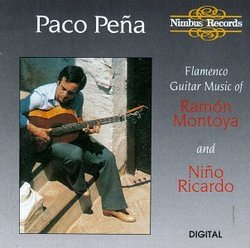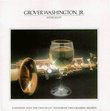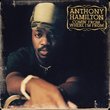| All Artists: Paco Pena Title: Flamenco Guitar Music of Montoya & Ricardo Members Wishing: 1 Total Copies: 0 Label: Nimbus Records Release Date: 12/2/1992 Genres: International Music, Latin Music Styles: Europe, Continental Europe, Latin Music, Flamenco Number of Discs: 1 SwapaCD Credits: 1 UPCs: 710357509322, 083603509347, 5014827509320 |
Search - Paco Pena :: Flamenco Guitar Music of Montoya & Ricardo
 | Paco Pena Flamenco Guitar Music of Montoya & Ricardo Genres: International Music, Latin Music
|
Larger Image |
CD DetailsSimilarly Requested CDs
|
CD ReviewsEngaging and Enjoyable for all listeners Richard Martens | Green Bay, WI USA | 08/17/2000 (5 out of 5 stars) "I have had the pleasure to hear Paco in concert on a number of occasions, and have always enjoyed the emotion as well as technical skill that he brings from/to the guitar. This album is an excellent representation of his style and abilities. The music is very accessable for all level of listeners. In other words, you don't have to be "really into" flamanco to be swept away by it. I have an other CD by Paco and really enjoy it, but it is not as accessable as this one. This CD should be part of the collecion for any lover of the guitar." A tribute to his roots Paul Magnussen | Campbell, CA USA | 08/31/2007 (5 out of 5 stars) "I contributed the cover photograph* and some of the booklet notes for this album, so I refrain from comment on the quality of the playing or the recordings. But here is some additional info that I hope will be of interest. Ramón Montoya and Niño Ricardo were two giants of flamenco, and Paco's earliest influences. Paco remembers being taken by his father to see Montoya, and what a tremendous impression the concert made on him; Paco must have been very young indeed, for Montoya died in 1949. Ricardo was of course also a major influence on Paco de Lucía. Paco and I did some of the transcriptions for this album together. At that time, neither Montoya's nor Ricardo's recordings were easily available, and Ricardo's still aren't, although both have now appeared in the Chant du Monde Grands Figures du Flamenco series. The bulk of Montoya's solo recordings were made in Paris in 1936. You may or may not be familiar with the flamenco concept of compás. What this amounts to is that danceable flamenco forms have to fit into a fixed traditional rhythmic structure, so that a dancer and a guitarist can improvise together, and each will know within certain limits what the other one will do. What is strange is that although in his recordings with singers Montoya's compás was immaculate, in his solo recordings (of which there aren't many) it was not infrequently all over the place. Various theories (such as pure absent-mindedness) have been advanced to account for this, none entirely convincing. The reason I mention all this, is that for this recording, rather than copy Montoya's originals slavishly, Paco adjusted these pieces to put them back into compás. The total time is 55'04". This album has now been combined with Azahara to form the double album Flamenco Guitar, and is also available in surround sound (along with the Misa Flamenca) on Surround Yourself with Paco Peña. *For those interested in such matters, it was taken in 1982 at an old inn, the Posada del Potro in Córdoba, while Paco was preparing to shoot a Spanish Television program about him. Tokina 28-80mm zoom." So sweet J. Zendle | Castle Rock, CO | 08/18/2004 (5 out of 5 stars) "beautiful songs. paco pena, although not as fast as say sabicas, has excellent technique and feeling. really brings these songs to life. i respect his wanting to carry the torch of traditional flamenco forward to the next generation."
|

 Track Listings (13) - Disc #1
Track Listings (13) - Disc #1

